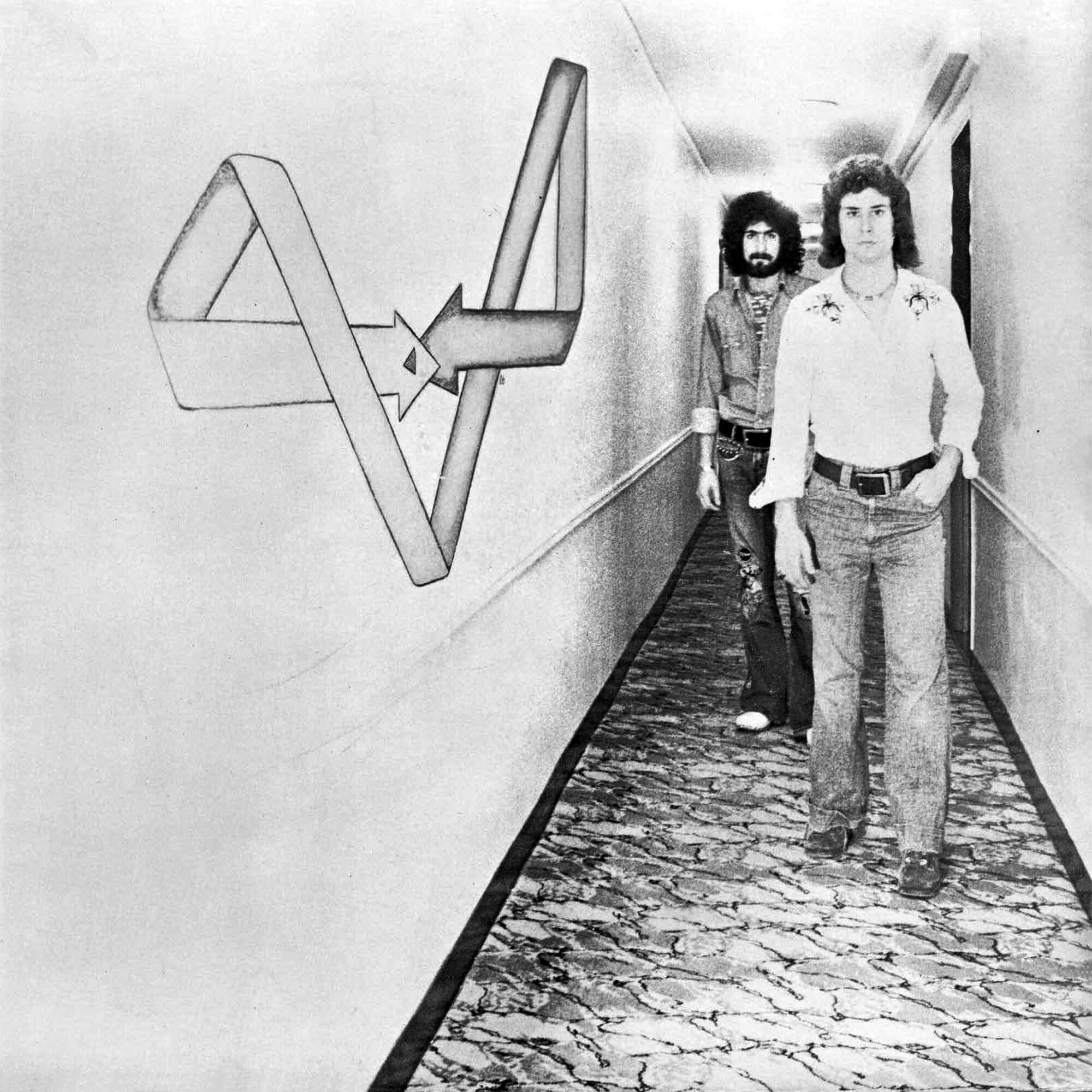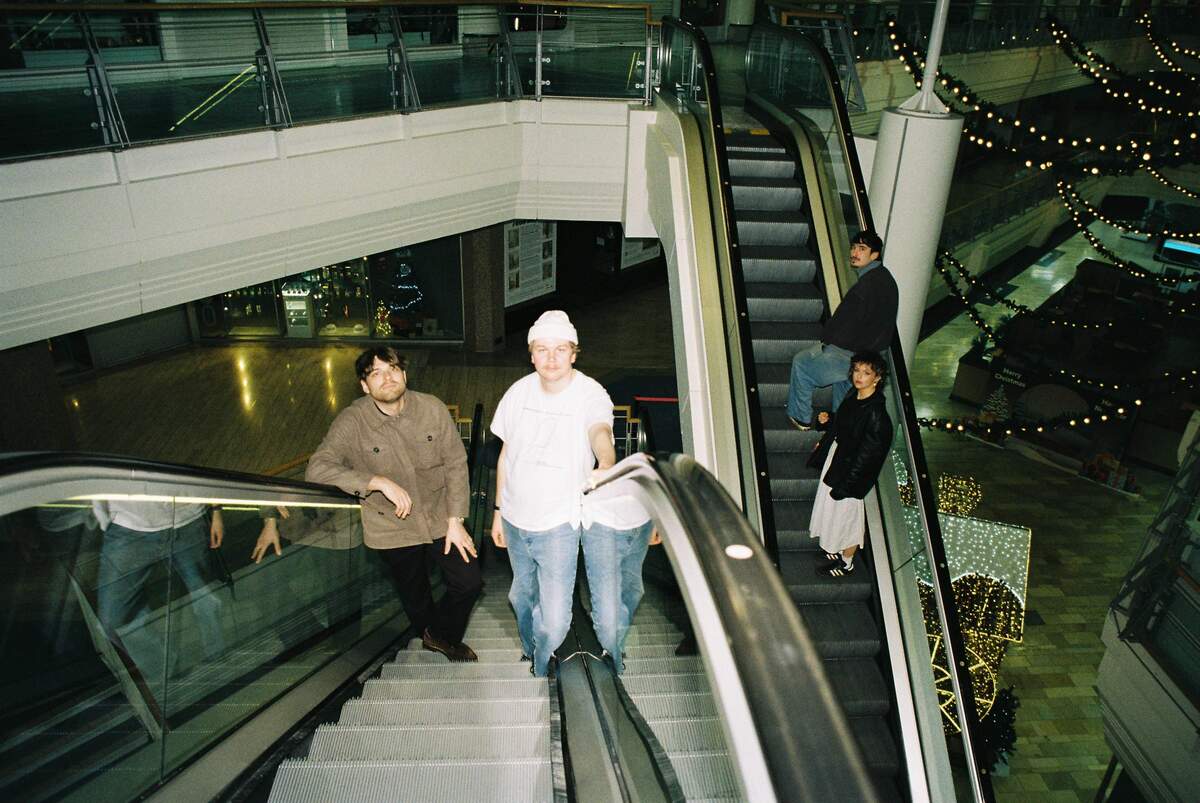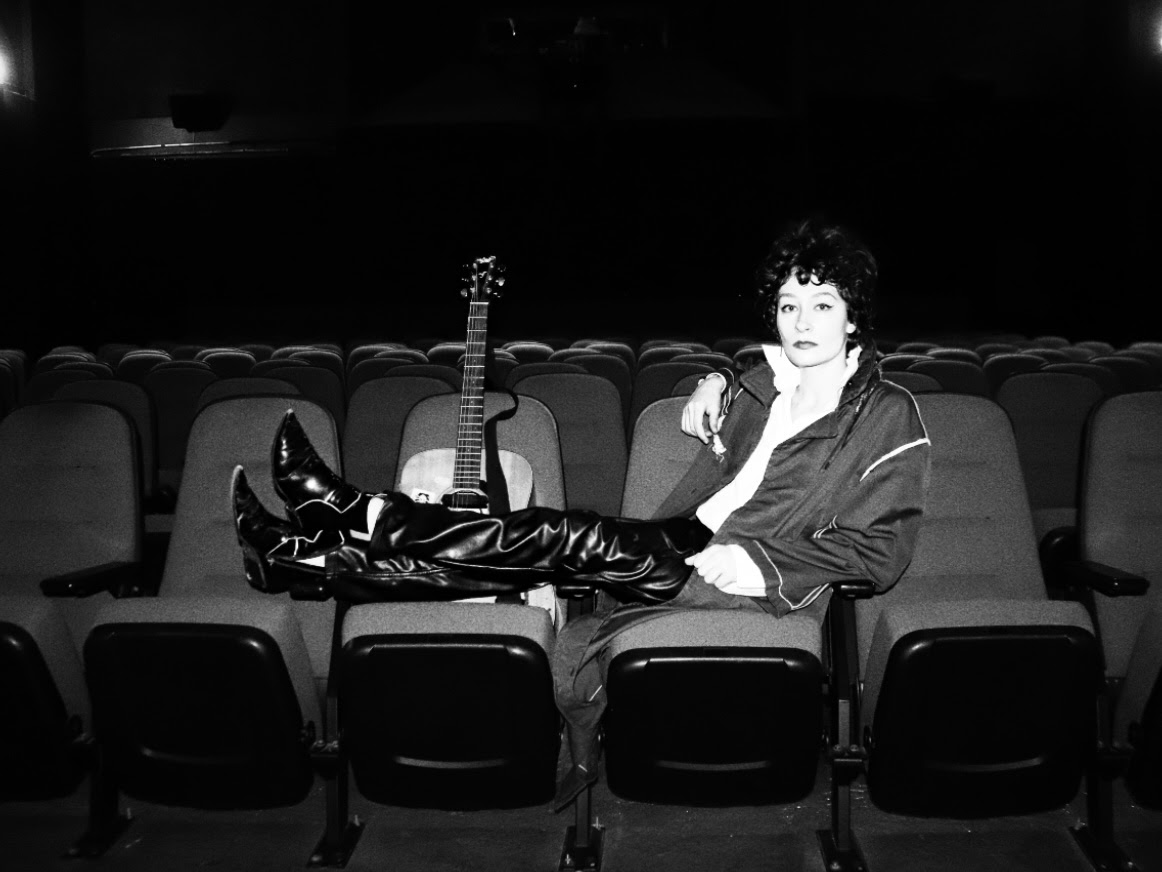Sidewalk | Interview | Reissue of Private Press Gem
Sidewalk’s sound existed somewhere between Steely Dan’s relentless jazz-prog shredding, the outdoor festival chug of Chicago and the technical prowess of Yes if they backed up a lost 70’s AOR songwriter.
Only whispered about by collectors, Sidewalk’s sole LP from 1976 was privately issued in a 100 copy run that sellers currently ask towards $10,000 for. Working directly with members of the band, Jackpot Records has lovingly restored the original master tapes to bring this record to private press fans for the first time. At the height of FM Radio rock, Sidewalk combined high-level chops with innovative chord progressions and advanced studio production to create a serious contender in the Cal-Jam festival era. But they tragically disbanded after pressing up this sole LP as the only document of their existence. This Jackpot Records reissue is pressed on high-quality vinyl and includes original artwork with liner notes written by Doane Perry of Jethro Tull, out July 28th. Pre-order here!
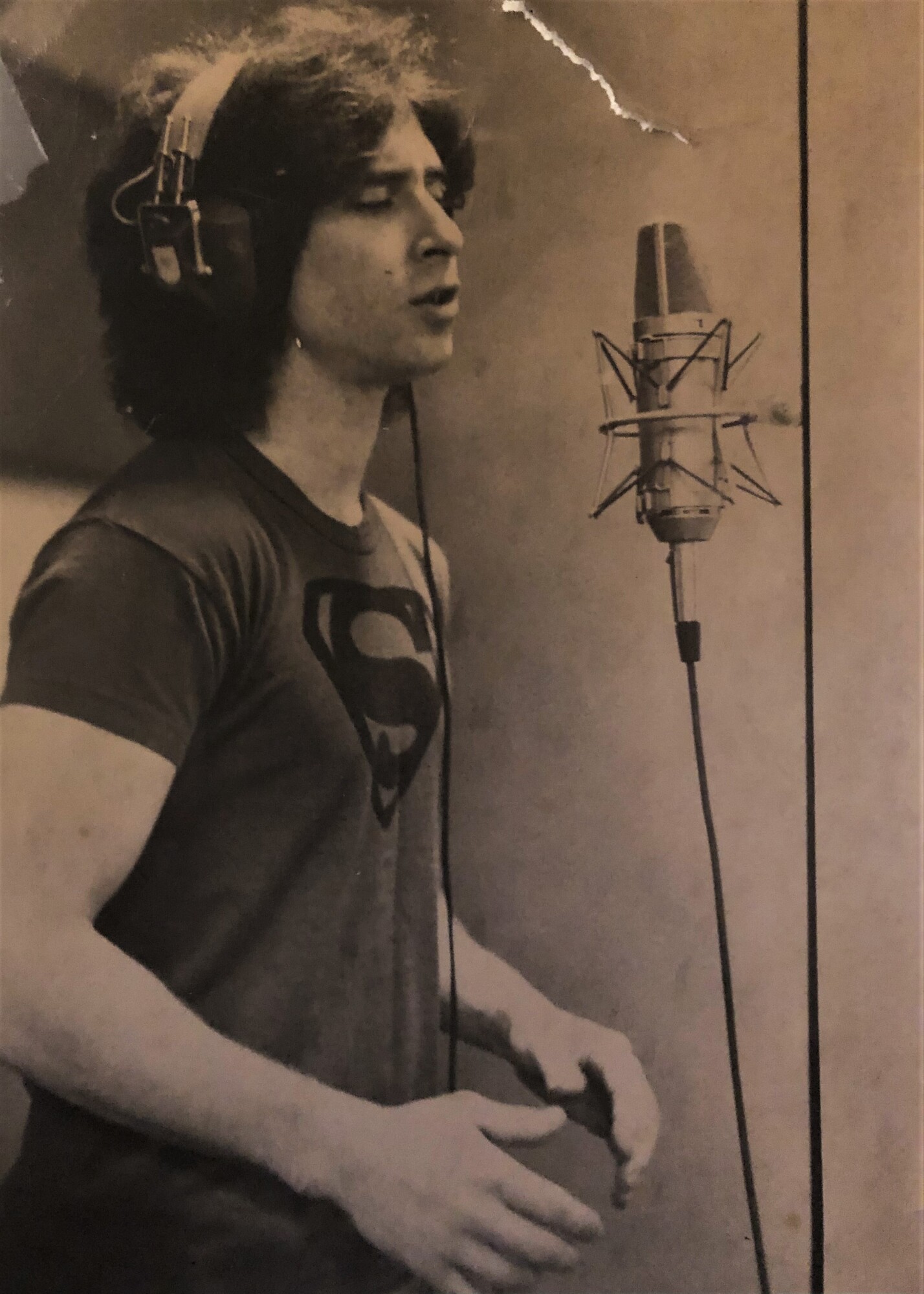
“We became “Steely Dan” in a matter of moments”
It must be very exciting to have your old music available thanks to Jackpot Records. The reissue will be released in about a month. What are your initial thoughts and how did the reissue project begin? Did you ever imagine it will get re-released?
Kip Kaplan: My initial thought regarding the release of the “reissue” was, “Thank you Lord for letting me live to see this happen.” I had stopped imagining it would get released, let alone “re-released,” back in 1977 when I went to work at Chappell Music Publishing running their recording studio operation.
Jackpot Records has restored the original master tapes to bring this record to private press fans for the first time. Where were master tapes stored?
The 2” master audio tapes had always been in my possession; and for the last 35 or so years were stored in a piece of furniture we kept in the garage. It wasn’t an ideal environment, but they were never subjected to extreme temperatures or moisture. They were in their original cardboard boxes on a 2” wide metal spool.
How did you get Doane Perry, former member of Jethro Tull to write liner notes?
I’ve had the honor of knowing and musically interacting with Doane Perry since around 1979 (give or take a few months). One of my bass players at the time, either Johnny Mann or Tony Coniff, introduced me to Doane. From the moment he sat at the kit, there wasn’t another drummer I’d ever met that could transform a “new composition” into an unstoppable groove. He liked my approach to playing piano in a rock ensemble. To this day, Doane honors me by playing on the productions of my songs that feature my son Rory Max Kaplan as the lead vocalist. When I advised Doane that there was a label that was going to release my Sidewalk album, he volunteered to write the liner notes. He happens to be a voracious writer. I knew that he would pen something that would be at once unique and heartfelt. Those two words best describe Doane Perry – along with the two words “brilliant musician.”
Let’s go back in time, where were you born and what can you tell us about your upbringing?
I was born inside Philadelphia proper, and then we moved to the nearby suburbs of Philly by 1960. I remember singing at a very early age, and was in fact asked to join the school choir while I was still in kindergarten. While in the 5th grade, our school was visited by the nationally recognized “Columbus Boys Choir.” After the concert, they invited anyone who wanted to audition to come up. I did. They then made an appointment to visit my home to let my Mom and Dad know they wanted me for their choir. My parents declined their invitation, but notice had been served. I could sing, and I wouldn’t stop for anything. By age 14 I was in a band called, The Sidewinders as lead singer – playing University of Pennsylvania fraternity parties. That turned out to be as contentious for my parents as wanting to go to Ohio to join the choir. In 1964, The Sidewinders were invited to go to Baker Studios in Camden New Jersey to “cut” four songs. It was my first appearance in a recording studio (4-track capability). Among the songs we did were ‘My Flash on You,’ a cover by the group Love; and a cover of Del Shannon’s ‘Runaway’. My voice hasn’t changed all that much since then; just more range and power.
After The Sidewinders, I joined up with various local guys to do bands that would play local parties. Nothing earthshaking; but it gave me a chance to learn and perform everybody else’s music of the day: from Cream, to The Beach Boys, to the sound of Motown, to The Beatles. I performed regularly at school programs, including all the theatrical shows they put up. I loved performing, and knew that being a singer was what I was destined for professionally. My number one vocal influence as a 14 year old was Sammy Davis, Jr. I sought to emulate his range, power, and breath control. While in high school, I trained with Marie Carlyle at the Settlement School of Music. She furthered my cultivation of those three vocal components.
Was there a certain moment in your life when you knew you would become a musician?
There was never a time I can remember when I didn’t “know” I’d become a professional singer. I didn’t consider myself a “musician” until I got to Penn State, where I majored in music. Becoming immersed in music theory enabled me to put to paper all the music that was in my head.
What was the first song you ever composed? As a songwriter, how did you approach songwriting?
The first full song I ever composed came in 1969 as a college freshman. It was called, ‘You Fit Into My Life’ – an opus that reflected the disdain my parents had for my choice of girlfriends. 45 years later, my son Rory sang a version of the song at my daughter’s first wedding. It’s way too personal a song to consider putting it into production, so it never saw the light of day, except for my daughter’s “walk down the aisle”.
But, my approach to songwriting never strayed far from allowing my fingers to walk on the piano keyboard, and let my ears hear what they played. Then, my brain would harness some of the chord changes I managed to hold onto. Once a chord progression was established; my natural sense of melody took over. Lyrics come last, and not easily. Lyrics use a different part of the brain, than occupy pure musical thought. Usually, at one point, a “phrase” manages to cut into the melody flow. Once that happens, I’m able to embellish the phrase into a full lyric.
Can you elaborate the formation of Sidewalk? Who were other members of the band and what led to the formation of the band?
I left Philly around 1974, and moved to New York City. I had a “job” waiting for me, and I registered with a service that connects you with others looking for “apartment mates.” I was all set to move into my “apartment,” when the day before the move, the person I was to rent from advised that instead of going to the address I had been given, I was to go to a theater (an actual Broadway theater) on 48th Street. I ended up moving into dressing room 9. That wasn’t great. But, I did have an 800 seat “living room,” with a full stage. That turned out to be a “magnet” for getting guys to come audition for the band I was looking to put together. The two most important people I met through that circumstance were Scott Landon, and Winn Schwartau.
What would you say was the overall vision of the project?
Scott Landon was a brilliant guitarist who also had a bunch of songs. He loved my music, and I loved his playing. We became “Steely Dan” in a matter of moments. We found a solid bass player (whose name I’ve long since forgotten); and an excellent drummer named Danny Steuber. While rehearsing on the stage, one day, somehow Winn Schwartau was in the house listening to us. He approached me, and asked if I’d like to take a weekend and record some songs. He ended up taking us to “Studio 914”. I later learned that Bruce Springstein recorded there, along with producers like Jack Douglas. We cut four songs that weekend, soup to nuts. I was sure we were “on our way.”
How long before recording your album did you play together? Did you do any gigs? What clubs did you play and what bands did you share stages with?
That “band” didn’t hold together for long. It didn’t even have a name. But, somehow I met a recording engineer named Andy Wirkmaa. He had the keys to Mayfair Studios at 701 7th Ave. He was so impressed with the music we made with Winn, that he offered to give us the studio time necessary to complete a whole album. With that, Scott and I found a new bass player and drummer, and added keyboardist Robert Casel. We took the ensemble into Mayfair and started recording a bunch of new songs. Scott and I collaborated on his compositions to turn them into more “vocal friendly” pieces. Along the way, we were introduced to Michael Wright. He became the de facto “producer” of the recordings. He was also the person who managed to get us the opportunity to “press” the mixes on vinyl to create a “record” that we could send to A&R representatives at labels. We were limited to 100 pressings. My girlfriend at the time, developed all the artwork used. That “girlfriend” became my wife in 1978, and we’ve just celebrated our 45th wedding anniversary.
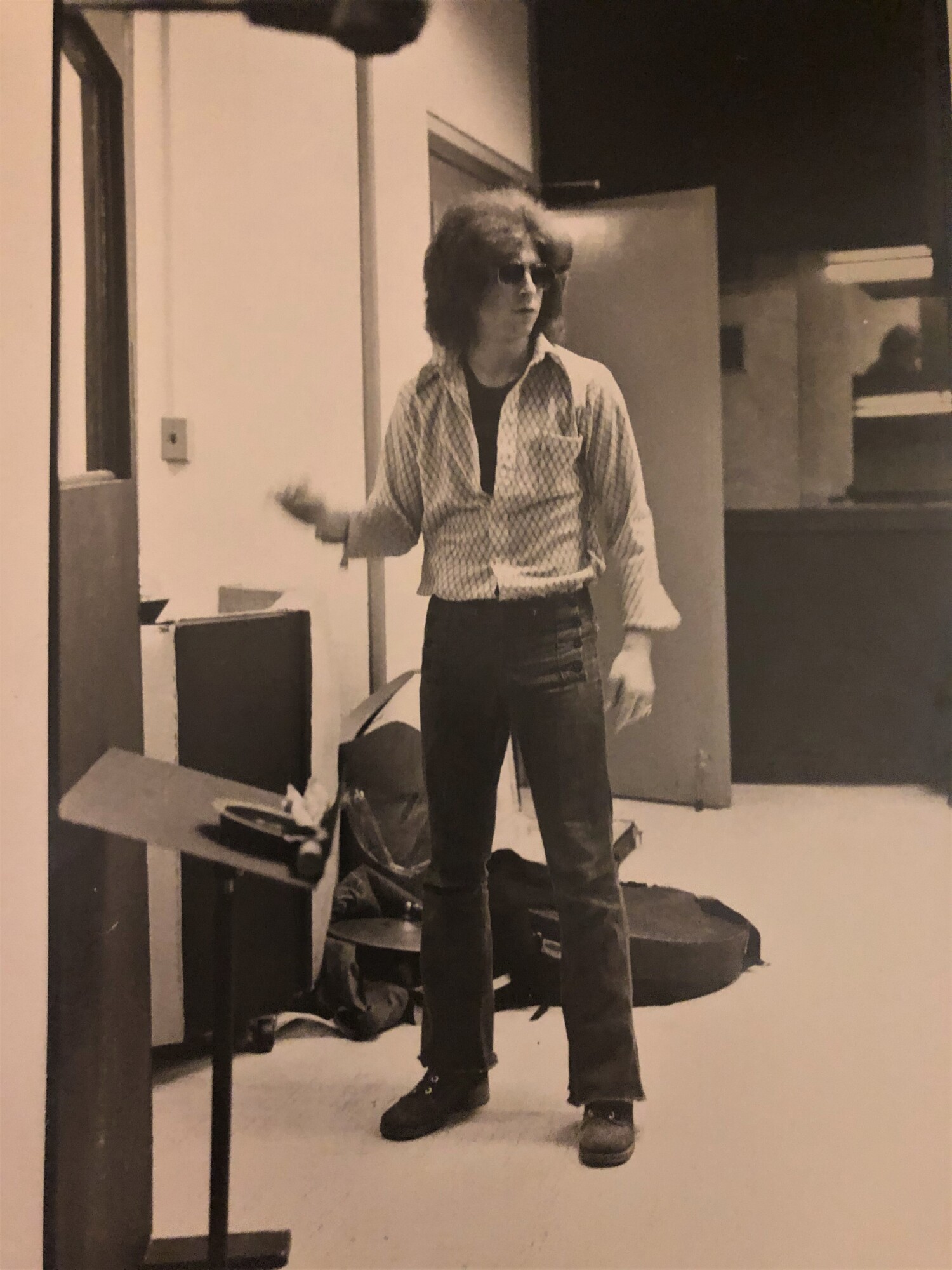
Did you get any responses from the local press or labels?
We sent the record to every record company we could find. Nobody wanted it. Game over (temporarily).
How did the idea to record a demo album come to be? Where did you record the material?
Scott went “away”. I never knew exactly where. I put a new band together, and was fortunate enough to have people like: Doane Perry, Tony Coniff, Larry Satlzman, Mark Rivera, Louis Cortilezzi, Jimmy Ripitoe, John Gordon, Frank Villardi, and others in the ensemble at one time or another. We played around NYC – China Club, SNAFU, and Greene Street were among the notable venues.
In 1981 I signed a recording agreement with a guy from Sweden, based in NYC. We cut an album at the studio where I had been the Manager: Right Track Recording. Frank Filipetti engineered the record, and Larry Osterman from the Entertainment Company was the producer. The record was never commercially released, because the label was never able to achieve a distribution deal.
How did you decide to use the name “Sidewalk”?
Back to “Sidewalk”; I always loved the name “The Sidewinders” from my kid days, and “Sidewalk” just seemed appropriate for being in NYC.
“The sound of the band and its music were always intended to be a vehicle for my vocal expression”
Your sound was a mixture of a variety of bands including Steely Dan, what influenced the band’s sound? What records were close to your heart when working on your album? Did you have a specific record in mind that you want to “imitate” sound-wise?
But the “Sidewalk” sound was never intended to be a reflection of influences. The sound of the band and its music were always intended to be a vehicle for my vocal expression. That’s why I’m the only singer on the record; which has a lot of vocal harmony throughout.
Would you share your insight on the albums’ tracks? I would love it if you can analyze the songs on the record. What runs through your mind if I would play it again.
‘Open Up Midnight’
I was in NYC during the emergence of the club scene. ‘Open Up Midnight’ is my homage to that. Ironically, a few years later, Larry Levan – the iconic DJ of “Paradise Garage” would become my client at Right Track Recording.
‘Not to Hide,’ ‘Down from the Stars,’ ‘Devils Glove’
Scott wrote the music and most of the lyrics for these. But he wasn’t a “singer.” He allowed me to massage both the melody and lyrics to all of these; and was thrilled with the end results.
‘Wonder Where You Are’
For a brief time, my college love and I were “not together.” It was unbearable for me. This song speaks to that feeling of loss and emptiness.
‘Here is a Song’ This song was replaced on the re-issue. I had written the song while a senior at Penn State, and it was just a simple ode to what love felt like to me at the time. It was the last song Sidewalk ever recorded. We recorded it at Studio 21 Sound, where I was the manager. Once again, “free” studio time.
‘Cosmic Signs,’ ‘Think In Twos’
Originally penned while I was still in college. ‘Cosmic Signs’ was inspired after being at a Mahavishnu Orchestra concert. ‘Think In Twos’ was the same period of “separation” that inspired ‘Wonder Where You Are’.
‘Opus 41’
It turned out, my girlfriend was also feeling the “separation”; and wrote a fully developed poem, which she sent me. Upon reading it, my fingers immediately found the music to ‘Opus 41’; and my voice was able to melodize her words – effortlessly. Needless to say, I knew at the time that I could never truly “live” without her.
There were four other songs that were recorded with either Winn or Andy: ‘Naked Rock,’ ‘Explain my Explanation,’ ‘Awaiting the Snow,’ and ‘Gumdrops’. We decided that for the re-issue, we would replace ‘Here is a Song’ with ‘Gumdrops’. We felt that ‘Gumdrops’ closer exemplifies what we were going for.
It cannot be overstated that we had NO financial resources, and very little experience in the studio. That we were able to create the amount and quality of music we created, is a testimony to the raw talent and pure passion of all those involved. Given any financial resources at the time, we would have spent more time evolving the overdubs and refining the mixes.
What happened after the band stopped?
Danny Steuber ended up in Oregon, I think. We’ve exchanged emails since we learned that Jackpot would release the record. He was thrilled to receive the news. Scott Landon might be deceased. We don’t know for sure; but one person who was instrumental in my finding and baking the master tapes believes that his research led him to that conclusion. It would be a terrible loss of musical talent, if it’s so.
Looking back, what was the highlight of your time?
The totality of the Sidewalk experience taught me what studio production was all about. It was the best education I could have ever gotten. As a result of the experience of making the entire Sidewalk album, I became forever “locked in” to the world of audio recording. I had already gotten into the realm of working in a recording studio by the time Sidewalk recorded its last song, ‘Here is a Song’.
What occupied your life after?
Shortly thereafter, I became the manager of Right Track Recording. I was responsible for taking it from a one room, unimpressive shop that turned over about $12,000 per month; to become a 3 room, world class facility that (when I left), was turning over more than $40,000 per month.
In 1981, I created Time Capsule Brokerage. With a staff of six, we coordinated over 15 million dollars worth of studio productions for the likes of: Nile Rogers, Al Di Meola, Cameo, Kool & The Gang, Bill Laswell, Omar Hakim, and hundreds of other notable recording artists.
In 1996, I started Audioworks Producers Group. Over 27 years later, Audioworks is one of the busiest “dubbing” houses in New York City; and together with Julian Evans, we now specialize in full audio post for film, theatre and television.
But having been partially responsible for bringing Rory Max Kaplan into the world, I have been blessed with the opportunity to have a protégé who loves the totality of all the music I created over the years; and who continuously inspires me to keep writing and producing new music. I write them, he sings them. Together we’ve built up a sizable body of recorded musical work.
Thank you for taking your time. Last word is yours.
Sidewalk, it seems, was just one of the pathways towards my musical destiny. And now, thanks to Issac Slusarenko, the origins of that pathway are more illuminated than ever before.
Klemen Breznikar
Audioworks Official Website
Jackpot Records Official Website / Facebook / Instagram / Twitter / Bandcamp / YouTube

